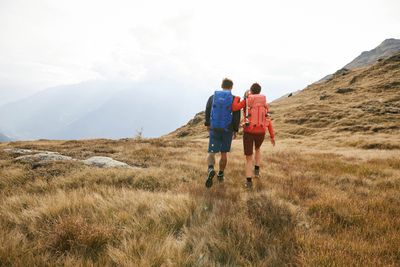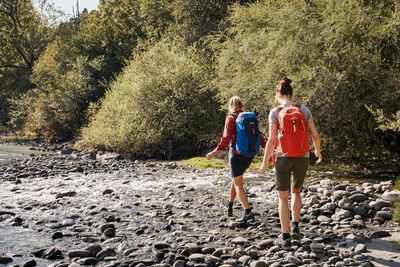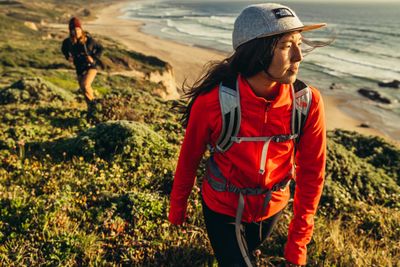Contents
Hiking backpacks - What to consider
You're ready for your next hike, but you're not sure which backpack is the right one for your tour? Here you can find out what size you need, what features you should look out for and what equipment your backpack should have.
What size should a hiking backpack have?

For short tours with little baggage, smaller backpacks or ultra-light backpacks are also sufficient. These score - as the name suggests - mainly by their light weight, but have no special carrying systems. For multi-day tours from three or four days, on the other hand, larger trekking backpacks are more suitable. With a volume of between 35 and 95 liters, they are designed for more luggage and are therefore equipped with more elaborate carrying systems and generous padding. That way, even with more weight, they still offer the necessary carrying comfort.
However, the volume specifications are only approximate guide values that should serve as orientation. Which size is the right one in the end depends on the one hand on the planned tour, and on the other hand on what is to be packed and how it is stowed. Those who limit themselves to the bare essentials can cope with a smaller capacity than hikers who like to be prepared for all eventualities and therefore prefer to take a little more with them. In changeable weather, for example, there should still be room in the backpack to stow jackets or warm mid layers that are no longer needed. Those who sweat easily may need more change of clothes. In general, however, the luggage should be limited to what is really necessary to keep the weight as small as possible and thus spare the back.
>> Packing list: What belongs in the hiking backpack?
The back length also plays a role

In addition, there are now many manufacturers that offer their own backpack models for women. These are better adapted to the female anatomy and often available with shorter back lengths.
Practical equipment

>> Click here for rain covers for backpacks
Especially with large backpacks it is useful to have several accesses to the main compartment or a division into different compartments. This makes it easier to keep order in the luggage and things easier to reach. Many hiking and trekking backpacks also have sophisticated systems to attach equipment to the outside of the backpack. These range from mesh pockets for bottles, to loops and cords for holding poles, to carrying systems for climbing helmets. Practical additions are also small details such as a signal whistle on the shoulder strap, a key holder in the inner compartment or small pockets on the hip belt, with which important utensils are quickly at hand.
>> More backpack accessories: straps, side pockets, helmet holders etc.
Carrying system for ventilation and load distribution

The heavier the backpack, the more important the hip belt becomes. While in light backpacks hip belts consist only of simple straps or are omitted altogether, they are more stable and well padded in larger models. This shifts the load of the luggage from the shoulders to the hips. The padded shoulder straps then serve more to stabilize than to carry the weight. For optimum carrying comfort, the chest strap should also be adjustable - including in height.

